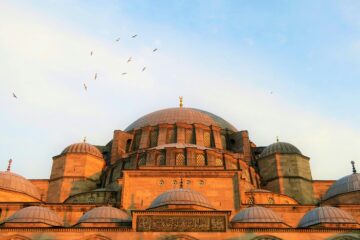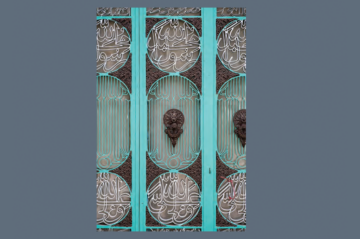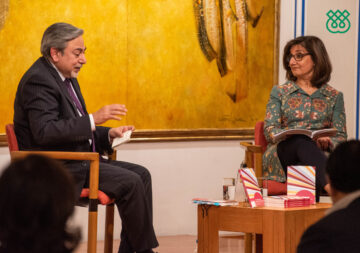Dr Nuha Alshaar, Associate Professor in the Qurʾanic Studies Unit at the IIS, has edited a volume entitled, Muslim Sicily: Encounters and Legacy, which is published by Edinburgh University Press. This book explores the significance of cultural exchange by examining Sicily’s Arabo-Islamic history, highlighting the island’s role as a key Mediterranean centre for politics, trade, and intellectual activities. It discusses Sicily’s interactions with the Muslim world, particularly with the FatimidsMajor Muslim dynasty of Ismaili caliphs in North Africa (from 909) and later in Egypt (973–1171) More of Ifrīqiya, which led to knowledge exchange and mutual influence. The text emphasises Sicily’s importance as a cultural hub, competing with other major intellectual centres like Qayrawān and al-Andalus, and examines its rich intellectual and artistic legacy. It also delves into Muslim-Jewish-Christian interactions, portraying Sicily as a place of dialogue between different communities and faiths.
In addition to editing this volume, Dr Alshaar has also contributed two chapters to the book. In the first chapter, entitled “Sicily’s Islamic Heritage: A Pervasive Culture”, she explores Sicily’s Islamic legacy in its own right, beyond the ByzantineThe late medieval Roman Empire which ruled large parts of Southern Europe and the Middle East from its capital Constantinople (present-day Istanbul), conquered by the Turks in 1453 CE. and Norman lenses. It covers the Arab conquest and rule by the AghlabidsMuslim dynasty that ruled in North Africa (800–909), succeeded by the Fatimids. (vassals of the Abbasid Caliphate), Fatimids, and Kalbids (viceroys for the Fatimid caliphateThe Muslim political institution or state centred around the caliph, which came to an end, historically, in 1924 with the disappearance of the Ottoman Empire.), emphasising a multidisciplinary approach to understanding Sicily’s Islamic history. The chapter highlights Sicily’s political ties with North Africa and al-Andalus, and its role as a hub for Arabic thought in Europe. It also discusses the persistence of Islamic culture under Norman rule and Sicily’s history of coexistence between Muslims, Christians, and Jews, offering lessons for today’s social challenges.
In another chapter from Dr Alshaar, entitled “Intellectual and Poetic Traditions of Sicily during the Fatimid and Kalbid Rules”, she explores their rich Arabo-Islamic literary traditions. It treats the link between power and knowledge and how different Kalbid emirs promoted a literary and intellectual culture in Sicily in order to build their court protocol, aristocracy, and social prestige. It discusses how Sicily became a major intellectual centre during this period which attracted many philologists, litterateurs, ascetics, jurists, poets and high-ranking people, and how it became a link between the Islamic East in Qayrawān and West in al-Andalus. The chapter explores the artistic achievements of specific Kalbid emirs who promoted culture and civility, looking particularly at the relationship between these emirs and poets. In doing so, the chapter discusses panegyric poetry, and descriptive poetry related to society, empire, and buildings, and their characteristics and functions in the context of social and political changes in this period. This exploration highlights the interaction between literature, religion, and politics in the literary production of this period.
Another scholar from the IIS, Dr Shainool Jiwa, Associate Professor, has also contributed a chapter to this work, entitled “The Kalbids of Sicily: Stalwarts of Fatimid Ifrīqiya”. This chapter emphasises that the Kalbids were significant actors in Fatimid Ifrīqiya, reshaping the perception of Sicily from a distant province to a vital part of the Fatimid political landscape. It details the careers of several prominent Kalbids across different reigns, highlighting their integral role in both Sicilian governance and the Fatimid state as a whole. Dr Jiwa covered a similar topic in the State of the Field Conference in 2022.
Muslim Sicily: Encounters and Legacy builds on existing scholarship, using a multidisciplinary approach to explore Sicily’s connections with the Muslim world, including its mercantile, artistic, and architectural links, and examines various aspects of its cultural and religious life during the period of Arabo-Islamic dominance from 800 to the mid-13th century. This book is available from Edinburgh University Press and is also Open Access.







